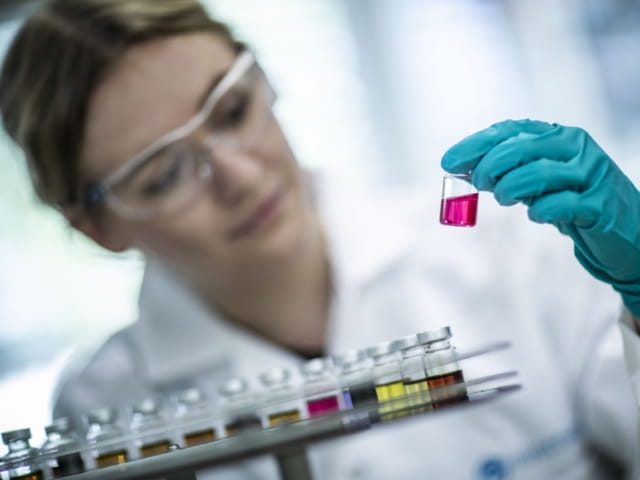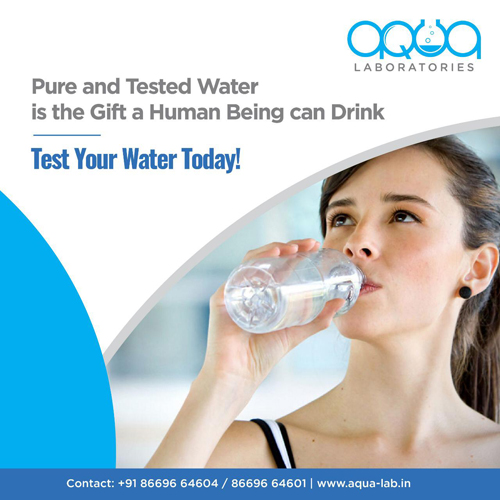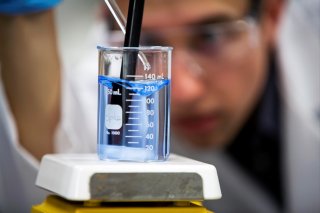Professional Well Water Testing Services: Obtain Accurate Results Fast
Professional Well Water Testing Services: Obtain Accurate Results Fast
Blog Article
Discover What Is Consisted Of in Water Testing and Just How It Makes Sure Safe Alcohol Consumption Water
Comprehending the ins and outs of water screening is pivotal in guaranteeing the high quality and safety of our drinking water. With a meticulous exam of physical, chemical, and microbiological aspects, water testing recognizes possible contaminants that could present wellness risks. From the existence of heavy metals to harmful bacteria, each test element plays an important role in preserving the honesty of our water supply. Advanced strategies like chromatography and spectrometry boost the precision of these analyses. How do these procedures equate into the regulatory frameworks that ensure safety and security in our day-to-day intake?
Secret Components of Water Screening
Water testing is a critical procedure that involves several essential parts to guarantee the security and quality of alcohol consumption water. Additionally, making sure the pH balance of water is necessary, as it influences the water's corrosiveness and the effectiveness of sanitation procedures.
An additional significant component includes microbiological evaluation, where water examples are checked out for the presence of microbes such as microorganisms, infections, and protozoa. If eaten, this evaluation is essential to identify organic risks that could posture wellness threats. Additionally, chemical analyses are performed to spot not natural and organic substances, such as heavy steels, nitrates, and chemicals, that may be existing in the supply of water.

Detecting Dangerous Contaminants
Spotting dangerous impurities in drinking water is an essential aspect of guarding public health. This process includes identifying potential threats that can jeopardize the high quality and safety and security of water products. Contaminants can vary from microorganisms such as microorganisms, viruses, and protozoa, to not natural compounds like lead, arsenic, and nitrates, in addition to natural pollutants including chemicals and commercial chemicals. Each type of pollutant presents distinctive health dangers, making their discovery crucial to guarantee the water taken in by the public is secure.
Water testing for contaminants is typically conducted by governing agencies and water utilities, employing a combination of field sampling and lab analysis. These evaluations are developed to find both normally happening compounds and anthropogenic contaminants that may have entered the supply of water through agricultural drainage, commercial discharge, or maturing facilities. Routine tracking is vital, as contamination levels can vary due to environmental adjustments, seasonal variations, or human activities.
The recognition of unsafe impurities notifies required actions, such as water therapy interventions or public advisories, to minimize dangers. Early detection is essential to avoid negative health and wellness effects, varying from intestinal diseases to long-term problems like cancer, thereby making certain the continued safety of alcohol consumption water.

Chemical Analysis Techniques
In the world of guaranteeing secure drinking water, chemical evaluation techniques play a crucial function in identifying and measuring contaminants. These techniques are essential for identifying a broad selection of chemical compounds, consisting of hefty metals, chemicals, and industrial contaminants, which can posture considerable wellness risks. Methods such as atomic absorption spectroscopy (AAS) and inductively coupled plasma mass spectrometry (ICP-MS) are typically used to measure trace levels of steels like arsenic, lead, and mercury. These tools provide accurate metrology, promoting compliance with regulative criteria.
Gas chromatography-mass spectrometry (GC-MS) is one more vital technique, particularly for natural compounds. It divides intricate combinations and determines volatile and semi-volatile natural substances, making certain that pollutants like benzene and toluene are within risk-free limits. High-performance fluid chromatography (HPLC) is similarly used for non-volatile compounds, consisting of particular chemicals and drugs.
Ion chromatography is used to identify concentrations of anions and cations, such as nitrates and sulfates, directory which are essential in assessing water high quality. These chemical analysis strategies collectively make sure that alcohol consumption water stays risk-free by identifying discrepancies from established purity standards, therefore guarding public health. Making certain accuracy and accuracy in these tests is extremely important to keeping the integrity of water safety assessments.
Microbiological Examining Approaches
Exact microbiological screening is essential for protecting public wellness by making sure that alcohol consumption water is free from hazardous pathogens. This procedure involves identifying and mentioning microorganisms such as germs, viruses, and protozoa that might pollute water materials. Common microorganisms include Escherichia coli, Giardia, and Cryptosporidium, each posing considerable wellness threats.
A number of methods are used in microbiological testing to determine these he said threats. The membrane purification technique is regularly used, including water passing via a filter that captures germs, which are after that cultured to determine their existence and focus. Alternatively, the multiple-tube fermentation technique makes it possible for the quantification of coliform germs making use of a series of dilution and incubation steps.
Improvements in modern technology have introduced molecular strategies such as polymerase domino effect (PCR), which enables the quick and highly specific detection of microorganisms by intensifying their genetic material. Enzyme-linked immunosorbent assays (ELISA) likewise supply a method to find virus by identifying particular healthy proteins or antigens.
These differed approaches are important for detailed water top quality analysis, ensuring that water treatment processes work which circulation systems preserve safety and security. By using these microbiological screening approaches, possible carcinogen can be identified and minimized promptly.

Relevance for Public Wellness
Making sure the microbiological security of drinking water straight influences public health and wellness by stopping the spread of waterborne illness. Pathogens such as microorganisms, infections, and protozoa can result in diseases like cholera, dysentery, and gastrointestinal infections (Water Tesing Services Tampa). The execution of detailed water testing methods is vital in identifying and minimizing these dangers, thus securing communities from possible break outs
Normal water look at more info testing not just discovers microbial contaminants however also examines chemical and physical parameters that can impact wellness. For example, excessive levels of nitrates or hefty metals such as lead can present major wellness risks, especially to susceptible populaces like infants and pregnant females. By recognizing these hazards early, water testing makes it possible for prompt interventions, making certain the supply of water stays within secure consumption standards.
Additionally, water screening plays a critical duty in keeping public self-confidence in metropolitan water systems. For plan manufacturers and health and wellness authorities, the data derived from water testing informs decisions on framework financial investments and public wellness methods, making certain sources are guided where they are most needed.
Conclusion
Water screening functions as an essential mechanism for ensuring the security and quality of drinking water via thorough evaluation of its physical, chemical, and microbiological homes. By discovering damaging contaminants, such as heavy steels and chemicals, and using sophisticated techniques like chromatography and spectrometry, water screening assists in the identification of potential wellness dangers. The execution of extensive testing methods is important for keeping conformity with security standards, ultimately safeguarding public health and reinforcing confidence in community water systems.

By determining these threats early, water screening allows prompt interventions, making sure the water supply remains within safe consumption standards.
Water screening offers as an important device for making certain the security and high quality of alcohol consumption water with extensive evaluation of its physical, chemical, and microbiological homes.
Report this page